You can trust Cyclingnews
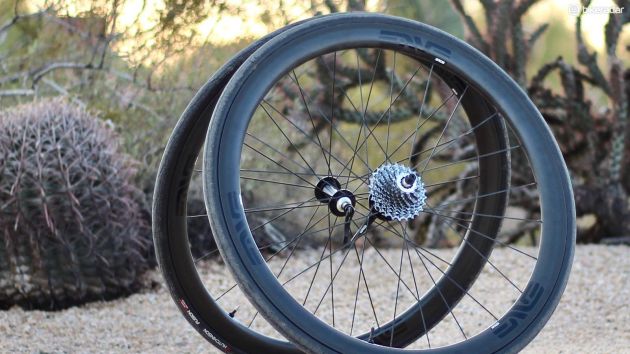
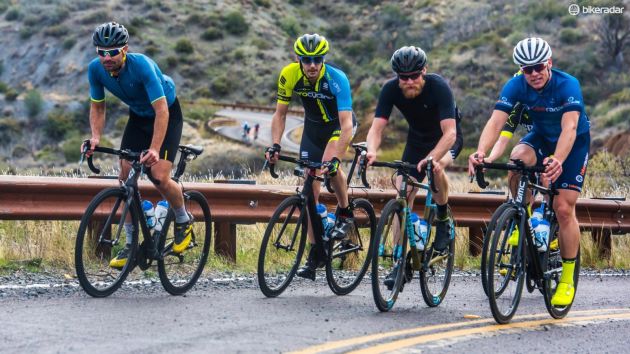
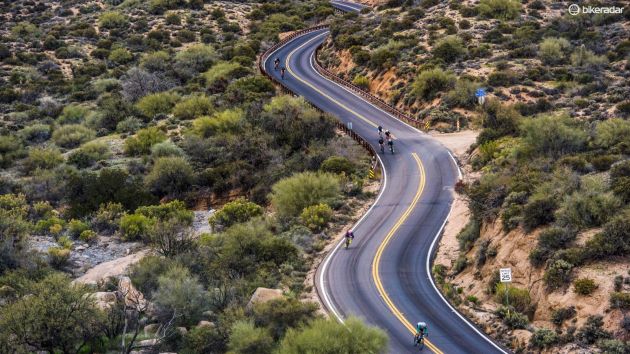
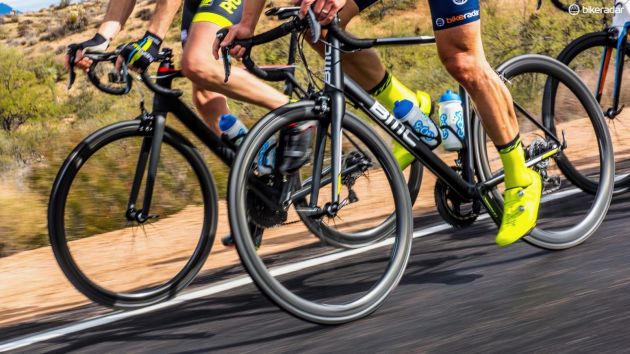

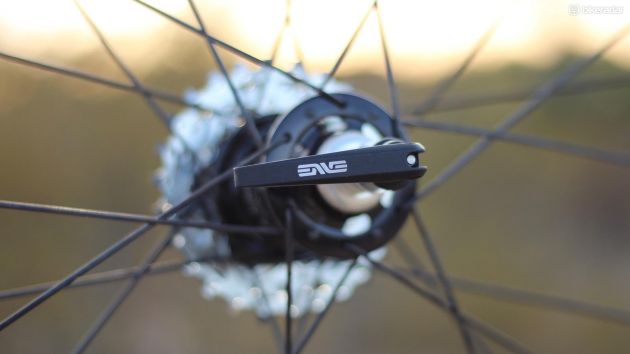
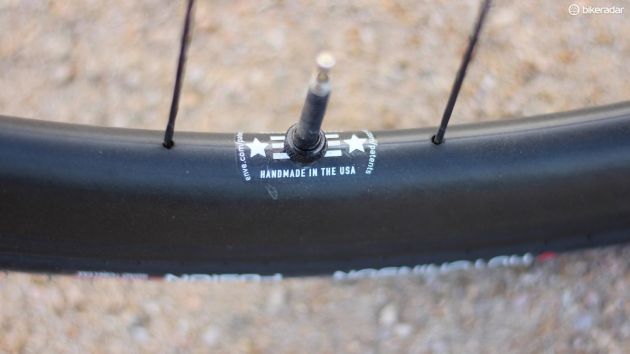
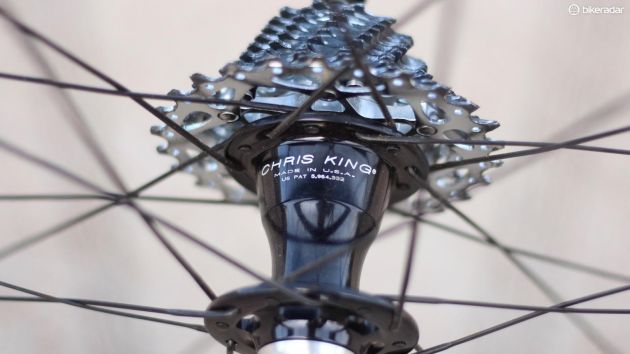
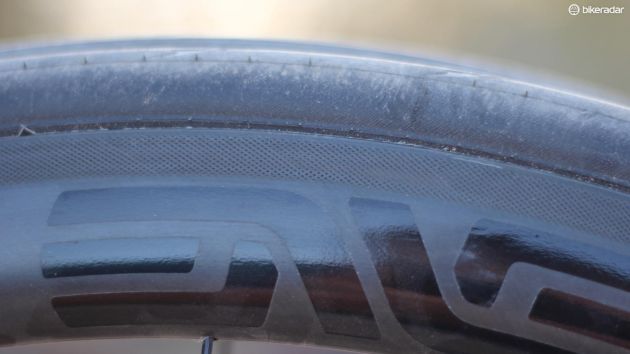
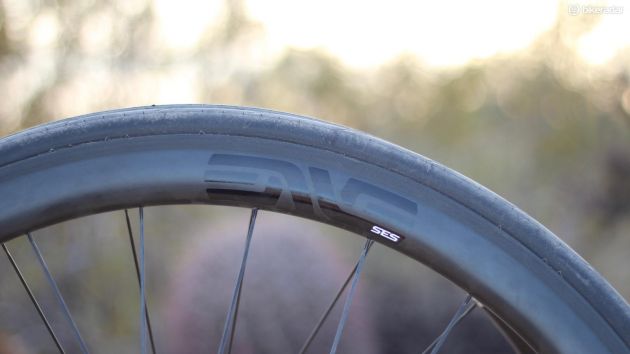
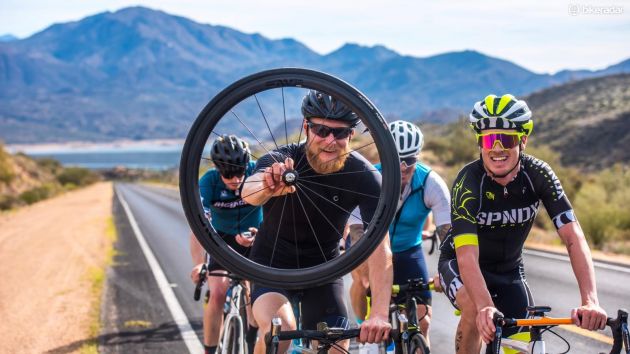
This article originally appeared on BikeRadar
ENVE overhauled its mid-depth SES 3.4 wheelset with new front- and rear-specific rim shapes, an in-molded brake track that works very well in the dry and the wet, and a variety of options for hubs, brake types and tire types.
- Highs: Light, stiff, wide, aero but stable; great braking in the dry and the wet; tubeless compatible and designed specifically for 25mm tires
- Lows: Wildly expensive; titanium skewers are flimsy; internal nipples can be a hassle
- Buy if: You want an excellent carbon wheelset and aren't scared off by the price
After testing the SES 3.4 rim clincher set up tubeless in Colorado, Arizona and England, we can say we love everything about the wheels except the price and the quick-release skewers.
On the road, they feel light and lively. Braking is outstanding and they seem almost immune to harassment from crosswinds.
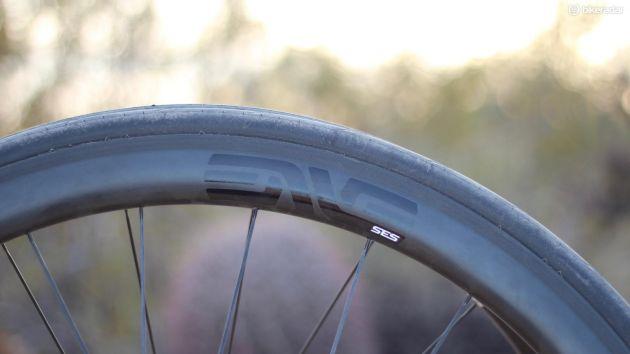
The rims got wider (21mm internal/ 29mm external) for better aerodynamics when paired with 25mm tires
ENVE SES 3.4 highlights
- Tubeless compatible (with rim strip)
- Molded-in brake track texture
- Designed for 25mm tires with 21mm internal rim width
- Front rim: 38mm x 29.75mm; rear rim: 42mm x 29mm
- Three hub options: ENVE, DT Swiss 240, Chris King R45 (tested)
- Available as rim clincher (tested), disc clincher, rim tubular and disc tubular
- Wheelset weights range from 1,271g (ENVE hub tubular) to 1,441g (King hub disc clincher)
- 1,416g as tested with Chris King R45 / rim clincher
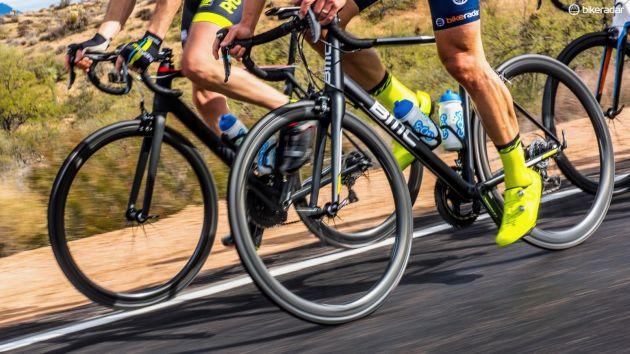
The wheels feel light and responsive when out of the saddle
Ride impressions
Good wheels are often remarkable for what they aren't — they aren't loud, noticeably flexible, heavy or sluggish.
From the first pedal stroke through to a few hundred miles later, the wheels feel great. They are light and stiff, and thus easy to accelerate.
While deep enough that most companies would call them aero, the SES 3.4s feel like shallow-depth wheels for how eager and agilely they spring forward.
Similarly, they seem immune to the wind. Not only is there no twitchiness or ghost steering in the wind, they don't really grab in gusts or crosswinds. They feel like a much, much shallower wheel that way.
For braking, ENVE added a textured carbon track that works surprisingly well, providing a little friction to carbon's typically slick surface.
I've only ridden the wheels in the dry and I can say the braking is strong and certain coming down mountains under a relatively heavy rider.
My colleague Jamie Wilkins has tested these wheels quite a bit in the English rain, however, and says the braking "is the best of any carbon wheels I've tried, especially in the wet" with a much shorter delay in response than the typical carbon wheel.
ENVE says the new brake track requires 30 percent less effort at the lever to achieve the same stopping power as the track it replaces.
Another number that may be of more interest: ENVE's new heat-failure test is 800w for four minutes, which roughly replicates a 200lb rider coming down a 20 percent grade with the brakes on.
The old test was 600w for 4-5 minutes, said ENVE engineer Clint Child, and the company occasionally saw some failures. Now, with a new high-temperature resin, ENVE has seen no rim failures, Child said, although some tires and tubes have failed.
I should note that ENVE's basic position is that riders who live in mountainous regions and want to use carbon clinchers should use disc brakes. And there is a disc version of this SES 3.4 wheel with Chris King and DT Swiss hub options.
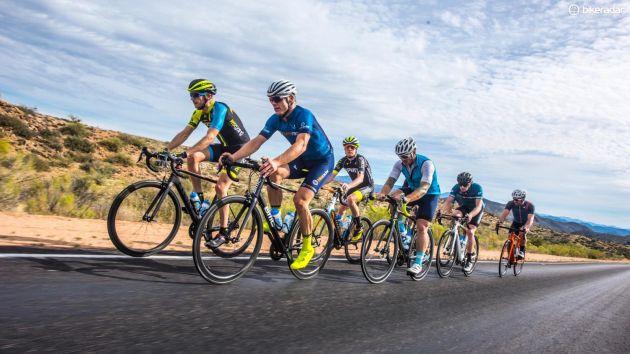
My colleague Jamie Wilkins (Procycling) and I first tested the wheels in Arizona, then took them home to England and Colorado, respectively
Although ENVE is billing them as a dedicated aero wheel, they sure feel fast. How much of that is the plumped-up tubeless tire thanks to the wide rim, the aerodynamics or just placebo, who knows. But I would happily race these wheels any day.
ENVE is billing them as a climbing wheelset with some aero properties, but to Jamie and me they feel more like great all-round wheels.
I have one two-pronged complaint, though. The titanium skewers are super light, but can stretch a bit, at least initially.
Charging up a steep dirt road, I pulled the rear wheel out of the dropouts, jamming it against the frame and knocking the wheel out of true. So complaint one: flexy ti skewers that require clamping down tighter than a normal skewer. (At 185lb and rallying on dirt roads, maybe I'm not the target customer. But still.)
This leads to complaint two: internal nipples are annoying to deal with, especially on a tubeless set-up.
Now, in ENVE's defense, if I had just cranked the skewer down tighter, I wouldn't have had to mess with the nipples at all. And I have raced, ridden and otherwise battered ENVE 4.5s (which have the same internal-nipple design) for quite some time without ever needing to touch them.
ENVE's marketing director Jake Pantone said that the internal design is a calculated decision. "We've been tempted [to use external nipples] especially with tubeless rims because then we wouldn't have to use tape in the tire bed of the rim," Pantone said.
But ultimately ENVE goes with the internal system because "statistically speaking you are less likely to need to true a wheel with our system of internal nipples and molded nipple seats," he said. "Additionally the rim structure is more efficient with the internal nipples, external nipples require bigger holes, more material, etc."
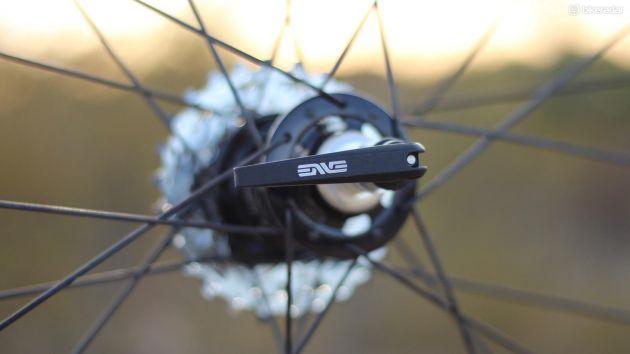
The titanium skewers are light but flimsy. I managed to pull my rear wheel out of the dropouts on a high-torque section of a steep dirt hill. If you crank the levers down more than others, they hold fine. Still, this is an area that could be improved. I'd gladly pay a 5-10g weight 'penalty' for ease of use and security
Wider is faster. Generally
You have probably heard or read about how relatively wider tires have lower rolling resistance than narrower ones. Now there is a point of diminishing returns, but 25mm tires roll faster than otherwise identical 23mm tires. And 28s are faster than 25s. (BikeRadar will have a video and feature on this later this month.)
The new SES 3.4s have a massive 21mm internal rim width, which will plump up any tire.
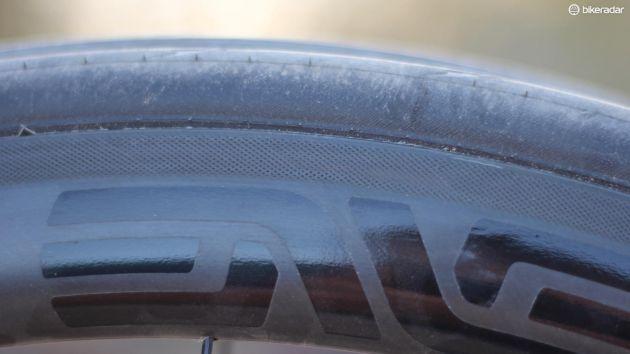
The molded-in brake track makes for noticeably improved braking. Jamie Wilkins said it's the best carbon braking he's experienced, in the dry and in the wet
Rolling resistance aside, wider is more comfortable, because you can run lower pressure without compromising the risk for pinch flats.
So, these wheels effectively give any set of tires a boost in the speed and the comfort columns. Plus, since they were designed specifically for 25mm tires, the aerodynamics are dialed too.
ENVE changes the dimensions of the 3.4 wheels with this iteration, going from 35mm x 26.5mm to 38mm x 29.75mm in the front, and from 45mm x 24mm to 42mm x 29mm in the rear.
While this wider profile fits nicely with a 25mm tire, a wider overall package ultimately presents a wider and thus slower profile to the wind.
Now, this is almost a matter of splitting hairs, as "slower" means a solitary watt when tested across an averaged range of yaw angles at 48kph.
I have to say, it's refreshing to see a company be honest about changes that don't put its product at the top of the chart. According to ENVE's testing, the new SES 3.4 is just over 101 watts at 48kph, compared to Zipp 303 and the old 3.4 being just under 101 watts.
ENVE would be quick to point out, though, that the new 3.4 is lighter than both.
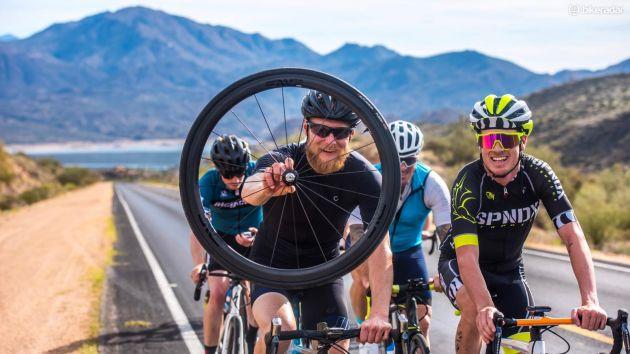
ENVE's Jake Pantone shows off the SES 3.4
In any event, the sacrifice of that solitary watt seems to have paid dividends for how the wheel handles in the wind. It's unflappable.
ZIpp engineers have told me there is always a compromise in outright aero speed and stability, be that perceived or otherwise.
ENVE SES 3.4 vs. the competition
ENVE's primary competition is that other American company with the four-letter name. But there isn't a direct comparison here in terms of rim depth.
The Zipp 202s have a 32mm tall (and 25.4mm wide) rim that builds up into a 1,450g wheelset. (UK pricing is not yet available, so all pricing comparisons are here in US dollars.) The $2,000 Zipp 202s have a narrower 16.25mm internal rim width.
The new Zipp 202 NSW wheels have the same dimensions, but a lighter 1,375g weight and a comparable price tag of $3,100.
The Zipp 303 NSW wheels are 45mm x 28.5mm, 1,425g and $3,100. In addition to some crosswind-taming black magic, the NSWs have a grooved brake track.
In my experience this braking is better than smooth carbon, but you really have to toe in your pads to avoid heinous squealing under hard stopping. Jamie says the new ENVE 3.4s are better in the rain.
Fulcrum has a 40mm rim, the Racing Carbon Quattro Clincher, which tips the scales at 1,555g for about a third of the price ($1,399).
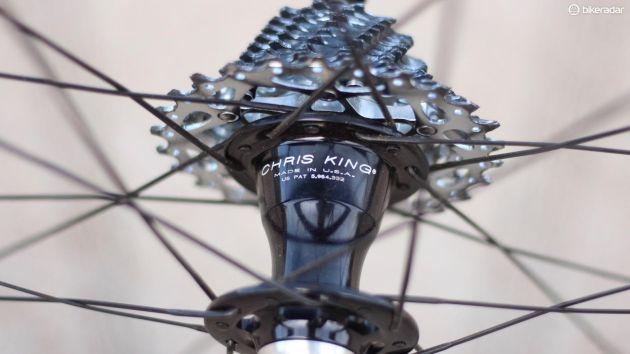
You have three hub choices: ENVE, DT Swiss 240 or this Chris King R45
Mavic's top-end 40mm clincher option, the Cosmic Pro Carbon SL C, weighs 1,450g with a 17mm internal rim width. That set is $2,199.
Mavic also has the 1,250g Cosmic Ultimate wheel, but that is a tubular with carbon spokes molded to a carbon hub.
If you think the ENVE SES wheels are expensive — and they are! — be aware that they're not the ceiling.
The Campagnolo Bora Ultra 35 Clincher, with its 35mm carbon rim and 1,360g claimed set weight, retails for a cool $3,999.
Bottom line: the ENVE SES 3.4 wheels are nearly perfect, but cost more than many bikes
Light, fast, stiff, good braking, unaffected by crosswinds... the new ENVE SES 3.4 wheels pack all the good qualities you want into two hoops.
My colleague Jamie says the new 3.4s are "probably the best all-round wheelset I've ridden. It's never the wrong wheel." The value is a tough argument, though; $3,200 can buy you a good complete carbon road bike with Shimano Ultegra. But of course the same could be said for many ultra-high-end components.
Cost aside, the wheels are exceptional. My only request would be a stronger set of quick-release skewers. As with that fraction-of-a-watt compromise for crosswind stability, a few extra grams at the skewer is a price I'd happily pay for easy durability.
In the meantime, though, if you do get these wheels, just tighten those skewers down hard and enjoy an excellent all-round set of wheels.
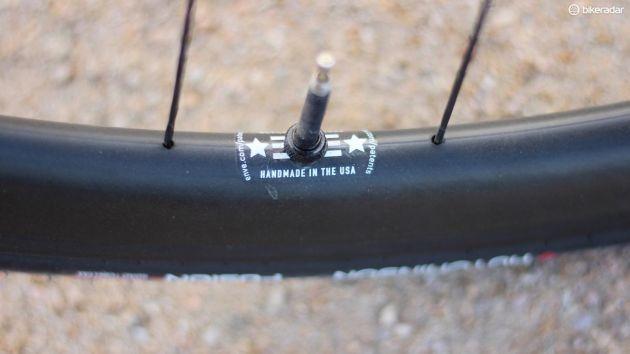
'Made in the USA' brings a few things to the wheel — a steep price being one of them
Specification
Name: SES 3.4
Built by: ENVE Composites
Price: £N/A / US$$3,200.00/ AU$ N/A
Material: Carbon
Weight (g): 1416
Tyre Type: clincher tubeless
Accessories Supplied With Wheel: Pairs of brake pads for carbon rims Q/R skewer rim tape
Quick Releases: Yes
Front Rim Profile: 38
Front Spoke Count: 20
Front Wheel Weight: 638
Rear Rim Profile: 42
Rear Spoke Count: 24
Rear Wheel Weight: 778